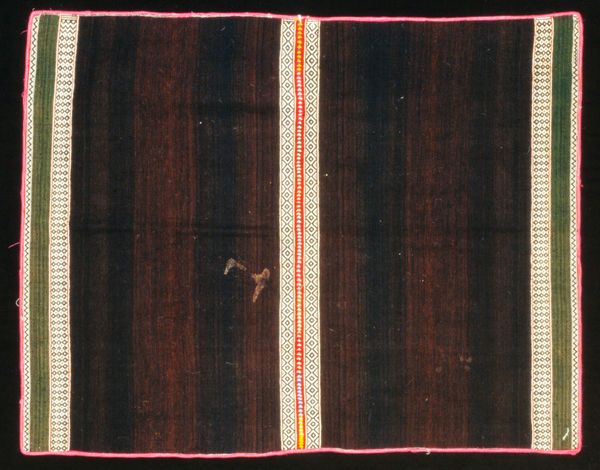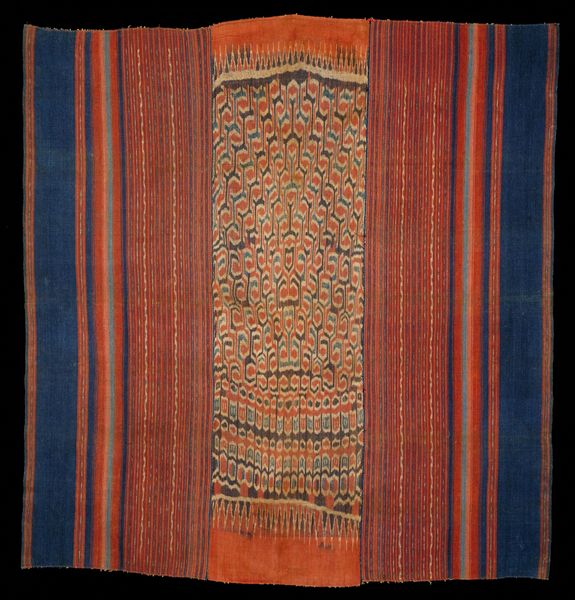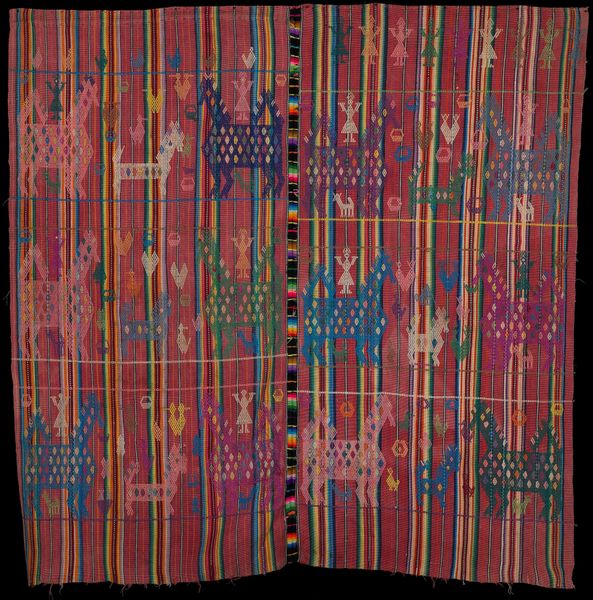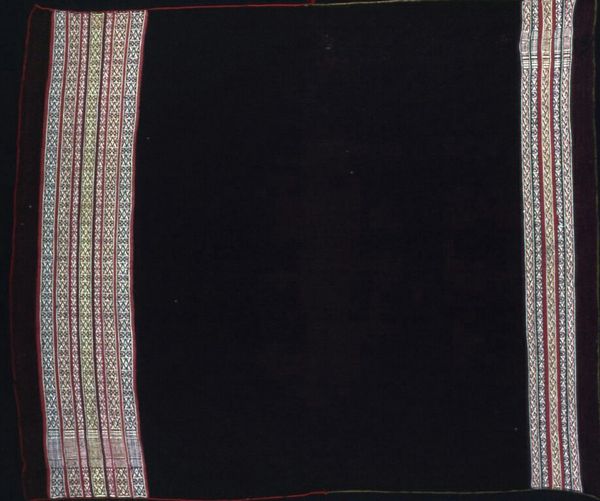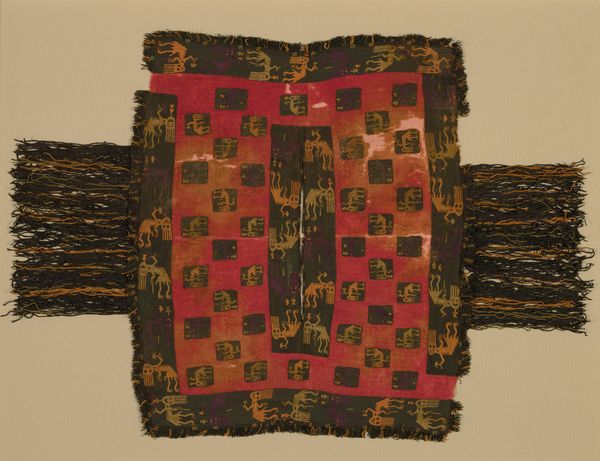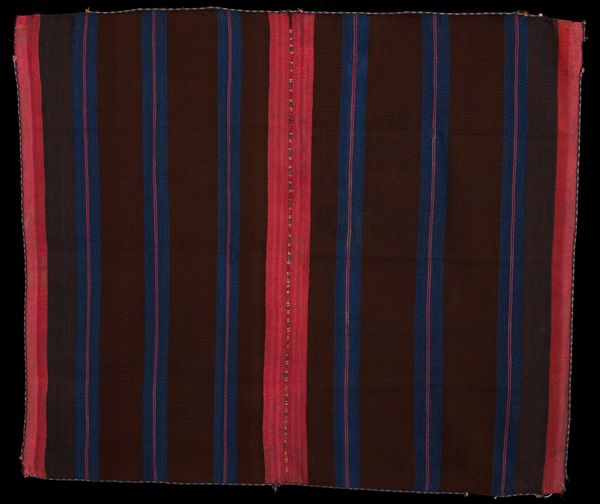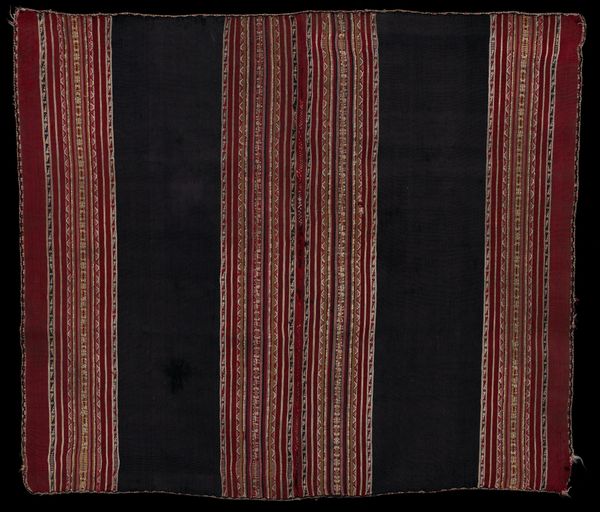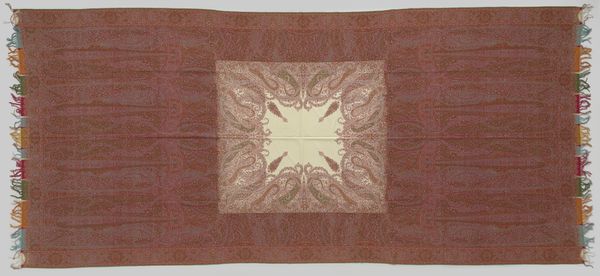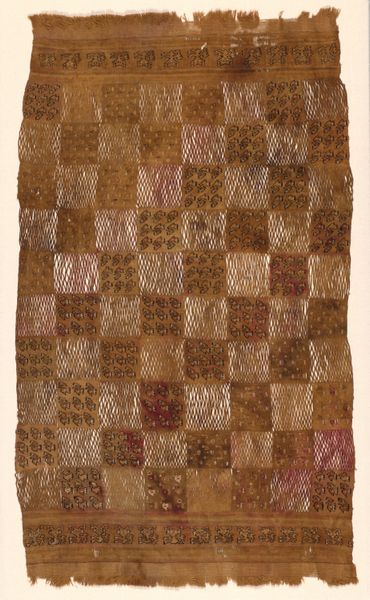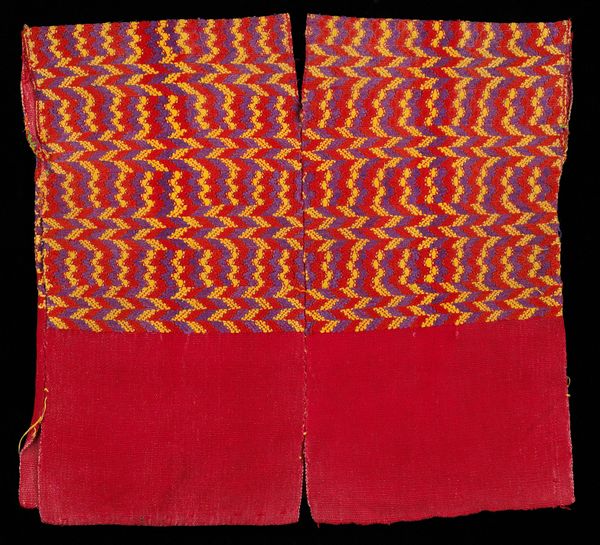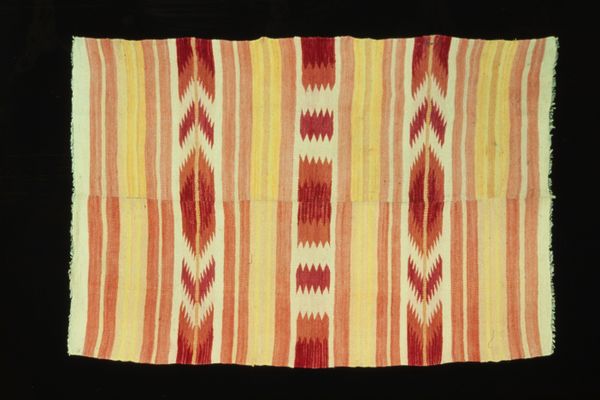
fibre-art, weaving, textile
#
fibre-art
#
weaving
#
textile
#
geometric pattern
#
abstract pattern
#
organic pattern
#
geometric
#
pattern repetition
#
layered pattern
#
indigenous-americas
Dimensions: 43 1/2 x 36 1/4 in. (110.5 x 92.1 cm) (irregular)
Copyright: Public Domain
This Mantle, made with fiber by a Quechua artist, invites a meditation on the rhythms of creation. The deep reds and purples, punctuated by vibrant yellows, speak of intention and an intuitive engagement with color. The process becomes visible in the making. Up close, you can see the textures, a testament to the hand that guided each thread. These vertical bands with the animals in, they are not perfect, more organic, each repeat with slight variations, like brushstrokes. Think of Agnes Martin's grids, but in textile form. This piece reminds me of the work of Sheila Hicks, who explores similar themes of tactility and texture, she elevates craft to high art, pushing the boundaries of what textiles can achieve. Art’s like that - an ongoing conversation that transforms with each new voice. It’s not about answers, but the questions the art provokes.
Comments
minneapolisinstituteofart almost 2 years ago
⋮
Worn by both men and women, mantles have a long history of providing extra warmth in the Andean highlands. Still popular today among Quechua women, mantles continue to convey long-standing symbols of gender and rank. Women wear the mantle across their back, draping it over their shoulders like a shawl. They fasten it together in the front using a pin called a tupu—itself a symbol of status and prestige. While mantle sizes typically vary by region, their construction is fairly consistent. Mantles are woven in two separate pieces, and when joined together, the completed garment contains wide patterned stripes across a solid-color background. When draped across the back, the stripes appear horizontally, a distinctly feminine style.
Join the conversation
Join millions of artists and users on Artera today and experience the ultimate creative platform.
